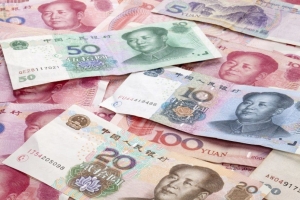In February, Iraq announced it would pay for private-sector imports from China in yuan, with its central bank planning to provide the Chinese currency to local lenders for dealings with Chinese counterparts. The decision by Iraq is partially aimed at easing pressure on the dinar by pumping foreign currency into the financial system.
However, in a sign that this should not be considered as a big de-dollarization move, Mudher Saleh, the prime minister’s financial adviser, said that the measures would not cover Iraq’s massive oil sector, which over the past decade has accounted for 99% of exports, 85% of the government's budget, and 42% of gross domestic product, according to the World Bank.
Potentially of greater significance for renminbi internationalization was the first yuan-settled LNG trade, executed by Chinese national oil company CNOOC and France's TotalEnergies through the Shanghai Petroleum and Natural Gas Exchange in late March. Approximately 65,000 tonnes of LNG imported from the UAE changed hands in the trade.
In recent years, Beijing has sought to settle oil and gas trades in yuan in to loosen the greenback’s grip on global trade. It also inked a deal with Russia in March to prioritize the construction of Power of Siberia-2 — a pipeline that could carry 50 billion cubic meters of natural gas from Russia to China every year. It is almost certain that renminbi will be used heavily for related trade settlement.
Meanwhile, the biggest recent win for renminbi internationalization this year so far is the deal reached between China and Brazil in April to jettison the dollar in two-way trade and financial transactions: The two nations will now use own their currencies instead. Given that Brazil is the largest economy in Latin America, that China is Brazil's top trading partner (with a record US$150.5 billion in bilateral trade in 2022) and the agreement is comprehensive – unlike the deals with France and Iraq – this appears to be a milestone for greater global use of the Chinese currency. Brazil is also China’s No. 10 trading partner and serves as one of Beijing key suppliers of iron ore and soybeans.
This landmark deal follows agreement reached between the two countries’ central banks in February, and the appointment of a yuan clearing bank and access to the Cross-border Interbank Payment System, which can be considered a SWIFT with Chinese characteristics.
Nevertheless, we should be cautious about overstating the impact of these deals on Brazil’s use of the dollar. To be sure, Brazil’s yuan-denominated foreign-exchange assets rose to a new apex of 5.37% by the end of 2022. The yuan is now the No. 2 reserve currency in Brazil.
Still, the greenback accounts for more than 80% of Brazil’s FX assets. Granted, that’s down from almost 90% in 2018, but it’s still a commanding majority.

